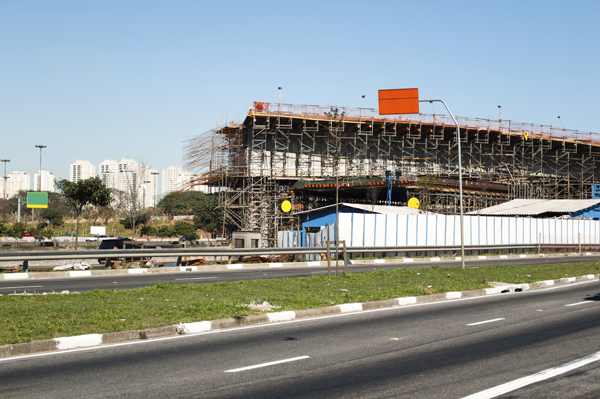Brazil’s urban transformation ahead of the World Cup

The madness has begun—and the first match hasn’t even started.
Over the past few weeks, hundreds of thousands of international travelers have flocked to Brazil for the 2014 FIFA World Cup, which begins on Thursday and runs through July 13. Some 3 million people plan to travel between host cities.
In preparation for the mega-event, urban planners and policymakers have used public funds to renovate airports, expand highways, and build stadiums and hotels. But public infrastructure is broken and many projects have been delayed or cancelled, like the brand new subway system in Belo Horizonte, a capital city in the country’s southeastern region. What’s more, at least eight workers have been killed in World Cup-related construction accidents.
“The World Cup as well as the 2016 Summer Olympics in Rio de Janeiro have presented unique opportunities to further develop Brazil’s growing cities,” says Thomas Vicino, an associate professor of political science at Northeastern University, “but there is a need to understand how and why many of these projects have failed and evaluate the impact.”
That’s where he comes in. Vicino, whose scholarship focuses on the political economy of cities and suburbs, has recently received a U.S. Core Fulbright Scholarship to analyze the socioeconomic and environmental effects of urbanization and globalization in Brazil’s largest metropolitan areas. He is one of approximately 1,100 U.S. Fulbright scholars who plan to travel abroad in 2013-14, according to the U.S. Department of State’s Bureau of Education and Cultural Affairs, which coordinates the program.

Vicino is currently in Brazil, where he is conducting preliminary research for his four-month Fulbright.
Vicino will be based in Belo Horizonte at Pontifical Catholic University of Minas Gerais, one of the country’s premier private universities. From August to December, he will gather quantitative data from Brazil’s housing and population census and qualitative data from interviews with urban planners, policymakers, and administrators.
His research will seek insight into the planning and policy implications of metropolitan citizenship; the major socioeconomic and environmental transformations in Brazil’s largest cities; and how and why urban and regional planning has impacted the implementation of local economic development policies.
His findings will lead to a series of peer-reviewed journal articles and culminate in a book on the dynamic processes of contemporary urbanization in Brazil.
“Brazil is a land of contrasts,” says Vicino, who led more than 140 Northeastern students on Dialogue of Civilizations programs there between 2009 and 2013. “These defining characteristics, including demographic shifts, economic transitions, political changes, and landscape transformations, offer a great laboratory into the study of urban transformation of global cities.”
In fact, Vicino is working there right now, conducting preliminary research for his four-month Fulbright with funding from the College of Social Sciences and Humanities’ Research Development Initiative. He is currently writing two papers—one on the militarization of urban space in Rio de Janeiro’s slums, known as favelas, the other on the country’s urban protest movements, with a particular focus on demonstrations against the Olympics and World Cup.
“The protests and the anger against the World Cup have taken on a life of their own,” Vicino writes in a forthcoming article on the failed promises of the popular tournament. “They have successfully united Brazilians from all walks of life in opposition to Brazil’s huge public investment in a mega-event.”





